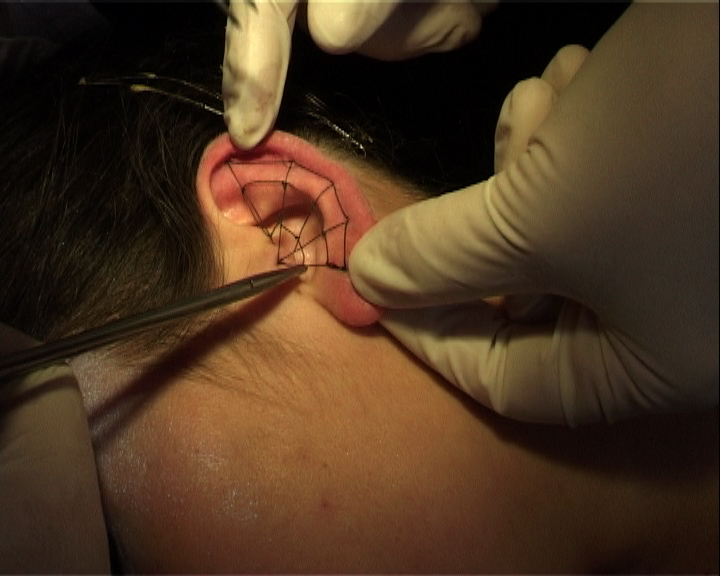
Rudina Xhaferi: I hear nothing
One exhibition
Rudina Xhaferi, Merita Koci, Driton Hajredini
Curatorial by Albert Heta
Opening: 21 August 2009, 20:00
21 August 2009 - 21 September 2009
'I hear nothing' (2004) by Rudina Xhaferi is probably the first performance that was done in the Kosovar art scene with the artist having her body as her subject and medium and with it exploring the physical and mental limits of her being, while withstanding pain, exhaustion, and danger in, my opinion, the quest for questioning the reality around her being. A part of this text above is a copy paste and adoption of a text on Marina Abramovic, the pioneer in the use of Performance as a visual art form. Like it is now it fits perfectly with this work.
This act, the surgical intervention aimed a closing the ear of the artist, with a net of a surgical cord, for me still remains the strongest message for this context for those that dare to read it.
'One exhibition', part of which this work is, is also about showing works that are 'under' the influence of the self practiced amnesia in this cultural scene.
This artist in not only associated with the fact that she performed the first work of this fashion in this scene. The lack of writing about these works and others is something that has always accompanied Kosovar artists. But when associated with this artist, a problem of actually writing about her work and comparing it with the work of an important artist of this scene became the first crime of a young art historian and a very passionate writer, back then. The crime becomes even bigger as, in my opinion, not writing about this work made this practice isolated and visibly non existent, not only for this scene, but in a way also for the artists that performed this work.
'One exhibition' is a project about selected works of artists but also and about breaking some limits of the curatorial practice in this context. Today in our neighborhood you can experience three openings of a biennale but can you have three opening of one exhibition with alterations to each opening?
Additional conceptual issues that have been the guide for the curatorial part of the work in this exhibition, besides issues mentioned, can be expressed in one sentence: How far can a curator go and influence a work in creation if he/she is present, by an invitation, when a work is being created, or even when showing work already done. This is a question that I'm sometimes puzzled with. Is proving space and focusing the attention on these works, these artists and issues around them the limit?
Being an artist myself, this question is always more than only a challenge and often this relationship is similar to an artist's collaborative work rather than only a curator-artist relationship that Ii have come to experience in my work. Often, when having a curatorial project in your hands, you are more than only a provider, view maker and opportunity creator or context builder. Can you ask the artist for an exchange of positions, do a second editing of a video, change the credits and call the work a video documentation of the performance and not a video?
And what are the differences between the influence on the idea and the influence in the manifestation of the idea?
Finally, 'One exhibition' is not about works created in my presence. It is more a project of re-editing one work and manufacturing the appearance of two other works that still can have a potential for building a momentum in this scene and beyond, a potential, in my opinion, to be reinstated and followed by these artists but also by the rest of the scene.
Albert Heta, August 2009